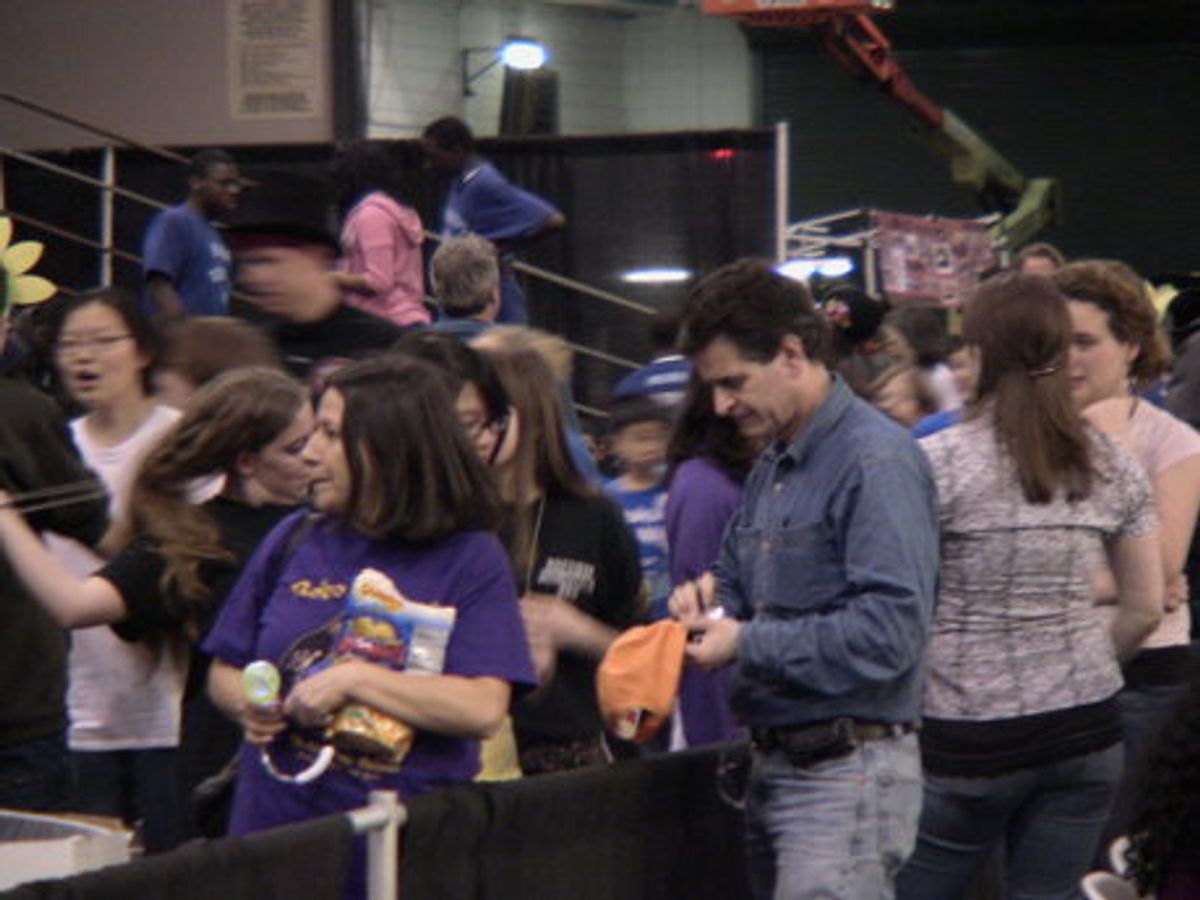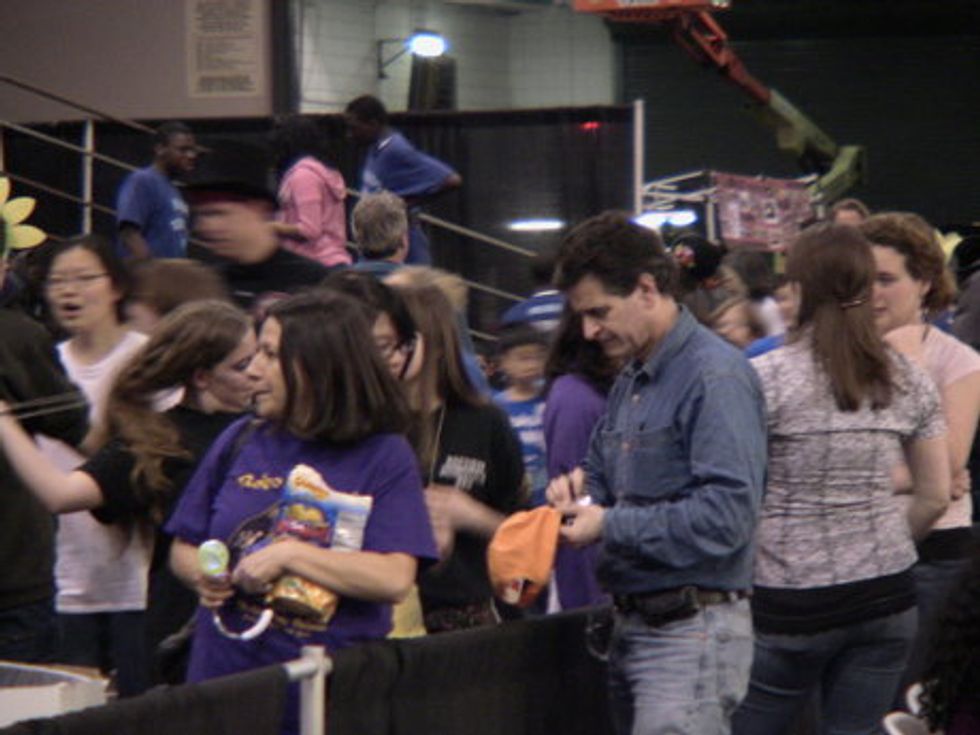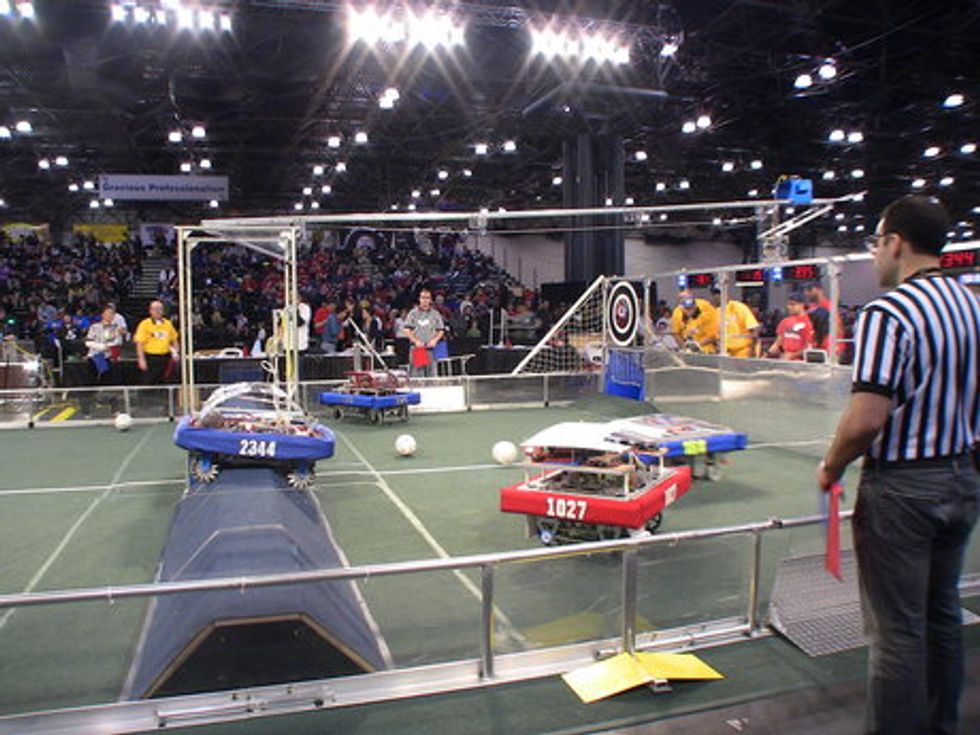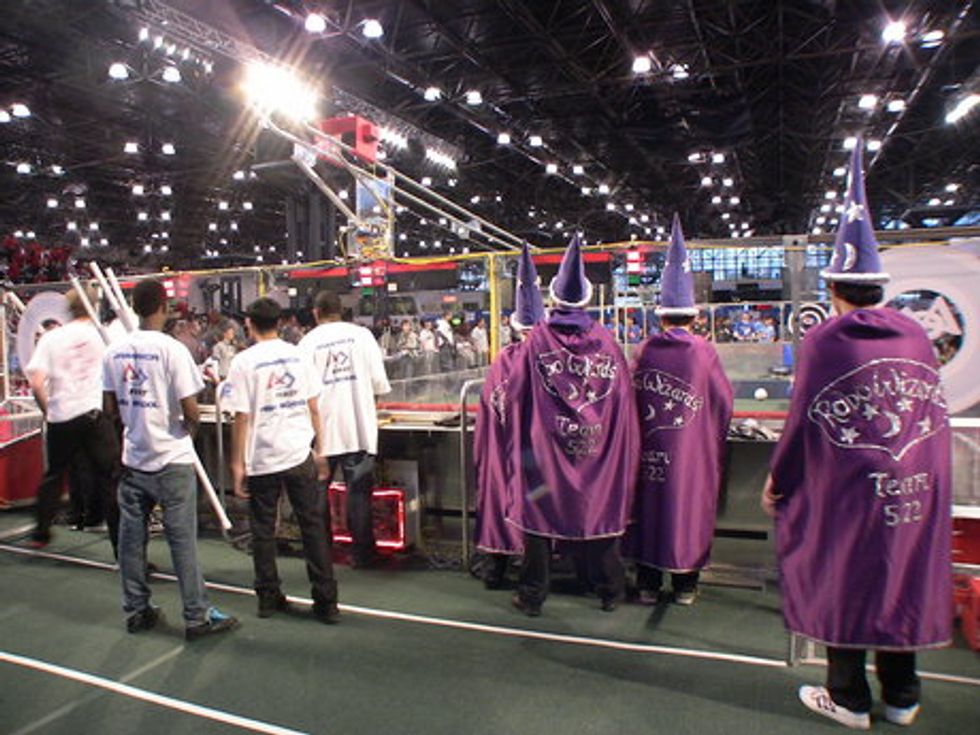At this weekend’s FIRST robotics NYC regional competition, FIRST founder Dean Kamen could be spotted signing autographs—often on T-shirts and hats—for eager high schoolers, or chatting with kids and fellow FIRST officials. It was refreshing to see them go ga-ga over a “rock star” inventor instead of a Hollywood celebrity (no offense to celebrities, of course).
During a few moments when he wasn’t working the crowd, Kamen took time to tell me what goes into planning each year’s robotics challenge, and to explain what he likes best about FIRST.
The robotics competition presents high school teams with a new challenge each year—this year’s task was to roll or kick soccer-like balls into goals while navigating obstacles on a playing field a little smaller than a basketball court. Kamen says his game design team changes the challenge every year because they don’t want returning teams to have a huge advantage over rookies, or to get bored and not come back each year.
They also want to focus on teaching kids how to solve new, complex problems, where in most other sports, Kamen says, “you’re learning how to optimize something that people have been doing for a long time.
“We try to emulate other sports, with the passion and the excitement and the instant gratification and the winners and the trophies...In many was we think it’s better than the academic or corporate model,” Kamen says. But in some cases, the sports model doesn’t apply.
Take NASCAR. “The cars are all identical, other than the logo from the advertising,” Kamen says, because the vehicle has been optimized. It has to be really low and really fast, for example. “But engineering innovation is [about] the discontinuity: a whole new approach, a whole new problem, a whole new solution,” Kamen says.
“We don’t want FIRST to become an optimization exercise,” he says. Instead, he wants the wow factor, for kids to open the box of parts each year and say wow, what is this stuff?!
This year’s game, for which young robot builders had to take into account several different features—the shape of raised bumps in the field, the size of the balls, and the height of bumper-like ramps on the goals that robots would have to roll up, rather than kicking straight and level—made the game “substantially more difficult” than the game designers expected, Kamen says.
But the kids “rise to the occasion,” he adds, and “they’re getting better and better by the day.”
True that. While Friday’s practice rounds often ended with no points scored, the final rounds on Sunday boasted several scores of seven or eight points, and almost never sported 0. Watching teams go from opening rounds to final rounds in each of the regional competitions, Kamen says, “you feel like you just watched kids go from T-ball to the World Series before your very eyes.”
One challenge with getting spectators excited about the game has been its complicated scoring system. In the past, Kamen says, “it was very hard to figure out who was winning until the game was over.”
This year the design team focused on making it easy for the audience to understand, complete with a real-time scoring system, with points and penalties listed immediately after each round. As an audience member, I thought it certainly made the game fun to watch, and it kept the kids’ energy high.
Kamen is proud that FIRST fosters kids who are “intensely competitive and simultaneously gracious.” The proof was evident: despite team spirit that brought out painted faces, capes, caps, and even a marching band, the teams still remembered that they were working together. In one instance in the “pit”—a huge, bustling area where teams and their robots and tools occupy tradeshow-like nooks—an announcer broadcasted that one team needed black electrical tape. Sure enough, a few seconds later, someone from another team zipped over with a roll of it.
Another broadcast was on behalf of a team looking for a fuse, which was shortly provided. So while the teams compete for top honors, they also learn fundamental cooperation skills. Can you imagine a football team offering a spare helmet to the opposition?
FIRST awards exist for this kind of behavior, namely the coveted Chairman’s Award, given for the team that best represents the goals of FIRST: respect, professionalism, and honoring science and technology. Other awards recognize top mentors, gracious professionals, innovators, and team spirit.
This year, Kamen introduced a new award: the Dean’s List (chuckles all around). This will go to student leaders who foster awareness of FIRST and its mission of spreading enthusiasm for science and technology to their communities. The award is also meant to inspire kids to continue as leaders of the FIRST alumni community (of which I am a proud member).
What Kamen is most proud of, however, isn’t the engineering, or the game. “In six weeks, you can’t expect kids to fundamentally grasp all of the sophisticated disciplines of engineering,” he explains. “The robot is just a vehicle, no pun intended. What they’re really building are serious relationships between kids and adults. Kids are building confidence, respect for each other, their teams.”
What’s more, he adds: “Every kid on every one of our teams can turn pro. You can’t say that about football or basketball.”
To Probe Further:
Learn more about FIRST, the FIRST-National Instruments robot control systems, Dean Kamen's robotic "Luke" arm, and how Kamen took his private island off the grid.
Photos: Dean Kamen with the masses; robotic playing field; teams controlling their robots from behind a shield.






